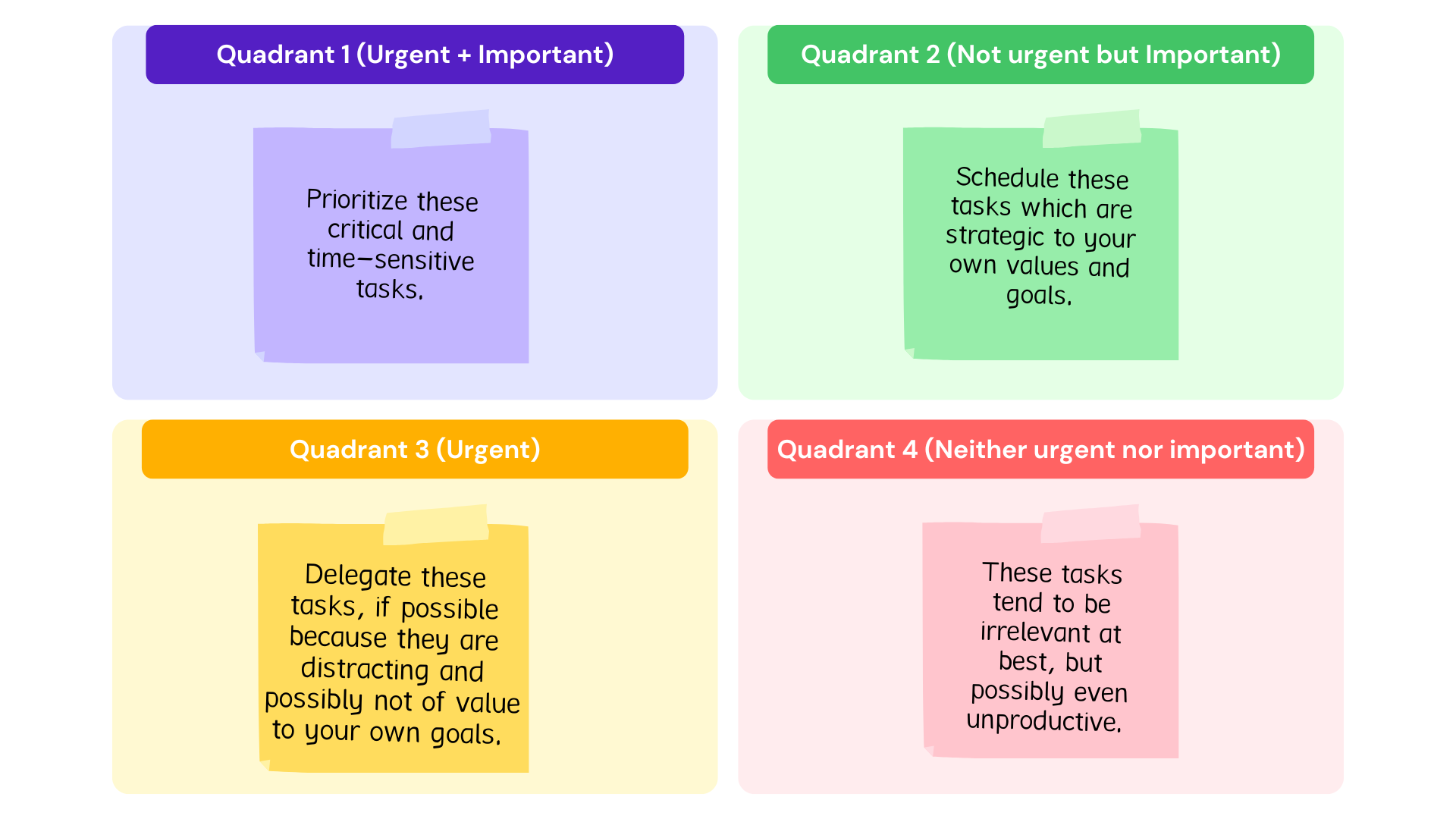Balancing Priorities
- Skills Development
- by Nicole Bridge
- 06-15-2024

Last month, I was commiserating with a few friends about the exhaustive nature of the end of the school year. Ceremonies, class parties, volunteering commitments, exam schedules, teacher’s gifts, coaches’ gifts and more. My friend said, “You know they’re calling it Maycember now.” What she meant was, the month of May has now become as chaotic as December. And for some (including myself) the professional workload is heavy and, at times, urgent- as the summer is pressing and there’s a sense that things need to be completed before it arrives.
Recognizing priorities
During times when personal obligations and professional responsibilities collide at full speed, it can feel impossible to tease out the priorities. One day I locked in on a writing project for hours and missed the room parent’s last call for contributions to my son’s 5th grade teacher’s gift. Early the next morning, I frantically waited in the parking lot for the grocery store to open, bought a gift card for the teacher, and fled to the school to tuck my tardy present into the class gift basket. Scurrying around over this task all morning left me behind in finalizing a set of presentation slides I had promised to send to a colleague first thing that same day. So suddenly that task became urgent too.
Panic makes it hard to see straight. I couldn’t take a thoughtful pause to consider how reordering my approach might have made things easier. The span of time when I was sitting in my car near tears in the parking lot waiting for the store to open, might have been better spent at home, completing the presentations slides. Stopping for one second might have also helped me remember that the teacher basket was not scheduled to be gifted until lunch or at the end of the day.
Writing it all down
When the multiple balls we have in the air seem like they’re falling all at once, stop, take a breath, and make yourself take time to write it out clearly. Taking this moment to pause and consider each item on your plate in isolation might reveal where you do have extra time or where a deadline is merely self-imposed or reactionary. Here are a couple of strategies you might try:
MoSCoW prioritization method
The MoSCoW method is a straightforward approach to prioritizing the tasks on your list. This simple strategy works best when the tasks are all yours and not really things that can be delegated. It involves going through each item on your list and assigning them a value:
M- Must do. S- Should do. C- Could do. W- Won’t do.
Once everything is assigned, delete all the W tasks. Then go through and re-order: M tasks first, S tasks next, C tasks last- or maybe save them for another time!
The Eisenhower Matrix
Another strategy is The Eisenhower matrix – a planning tool to help you distinguish between important and urgent tasks as a means for optimizing your productivity. Urgency refers to how quickly a task needs to be completed. Importance relates a task to your goals or values. The Eisenhower matrix divides your tasks into four quadrants:
- Urgent + Important (emergencies)
- Not urgent, but important (planning)
- Urgent (interruptions)
- Neither urgent nor important (trivial activities)
Taking time to consider every request or task that crosses your desk can ensure you are putting your greatest effort into things that are timely and meaningful, and set aside time wasters.
Implementing the matrix
Once you’ve filled the four quadrants of the matrix, look at each category and make your plan.

The truth is: Managing your priority list efficiently and productively will help you avoid taking on things that don’t relate to your overall goals and ambitions. Next time you’re feeling overwhelmed by everything on your plate, try one of these strategies and see if they work for you.


